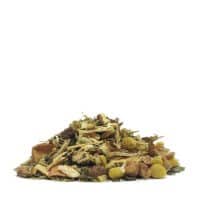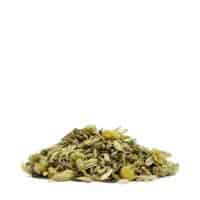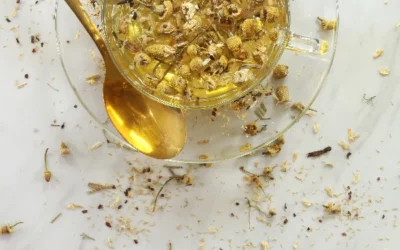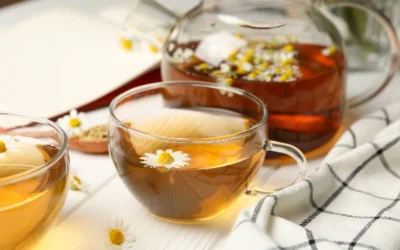Chamomile tea is renowned for its calming effects, making it an ideal natural remedy for stress, anxiety, and sleeplessness. Discover the myriad benefits, uses, and preparation tips of chamomile tea to enhance your wellness routine.
Organic
FREE SHIPPING
For purchases over 599 kr.
Delivery
2 - 5 business days
Organic teas
Eco-friendly packaging
What is chamomile tea?
Chamomile tea is an herbal tea made from dried chamomile flowers and hot boiling water.
Traditionally, two types of chamomile varieties are used when making this herbal tea: these are German chamomile (Matricaria recutita) and Roman chamomile (Chamaemelum nobile).
This tea is mild enough for even small children to drink, although it is recommended only in small amounts.
Chamomile tea has been linked to treating a range of ailments, from insomnia to stomach pain.
However, some people experience severe allergic reactions (including anaphylaxis) to chamomile.
You should be especially careful with this herbal tea if you are allergic to daisy, ambrosia, asters, chrysanthemum, or marigold Chamomile should also be avoided during pregnancy because it can act as a uterine stimulant and therefore increase the chance of miscarriage.
People with bleeding disorders or on blood thinners should avoid chamomile as they contain coumarin and can increase the chance of bleeding.

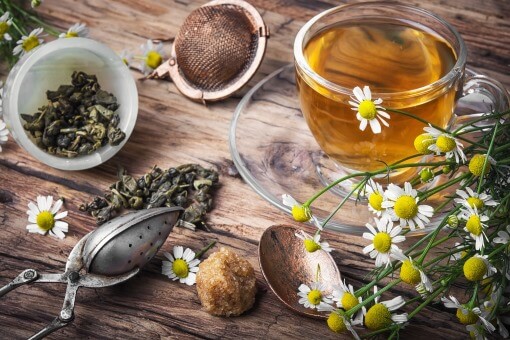
The history of chamomile tea
Chamomile is the common name for several daisy-like plants in the Asteraceae family.
Two of the species in this family are commonly used in herbal teas; German chamomile (Matricaria recutita) and Roman chamomile (Chamaemelum nobile).
These plants therefore come in many forms, so chamomile tea in one part of the world may not be exactly the same as in another.
Studies have shown that the German and Roman varieties of chamomile tend to have the strongest concentrations of beneficial nutrients.
Which makes them the most popular.
Besides the pleasant taste, chamomile tea has been praised over the years for its health benefits.
The presence of flavonoids, sesquiterpenes and other strong antioxidants in this tea has been proven to be beneficial for the human body.
A universe of tea
Understanding The Effects Of Adding Milk To Chamomile Tea
Adding milk to chamomile tea can alter its flavour and health benefits. While some enjoy the creaminess, others believe it masks chamomile’s delicate taste. If you’re curious about the implications of this combination and whether it suits your taste preferences, this read is for you.

The chamomile flower and the Vikings
In ancient Viking times, the chamomile flower was used in what can best be compared to a kind of shampoo.
The perception was that it added shine to braided hair.
In the Middle Ages, the petals were strewn around tables and elsewhere in the banquet hall at gatherings to create a pleasant smell and add to a cozier atmosphere.
Chamomile flowers were also used to flavor beer before the hops were added to the final brew.
Monks discovered that one in about every 10,000 chamomile plants (Anthemis nobilis) had double-headed flowers.
These plants were found to have a milder flavor, although the seeds were sterile, they were grown by a form of cloning for use in herbal teas and as medicines.
What is known today as Roman chamomile was not actually cultivated by the Romans, but was discovered by an English botanist in the Colosseum where it grew wild.
He brought it back to England, where it is one of the main forms of chamomile now cultivated.
Although chamomile plants now grow wild in America, they are not native there.
The plants were originally brought over and planted by colonists.
Eventually, natural dispersal made them a permanent part of the wild nature – they formed as weeds, so to speak.
Which is why to this day they can be found on farms and fields, as well as in gardens.

